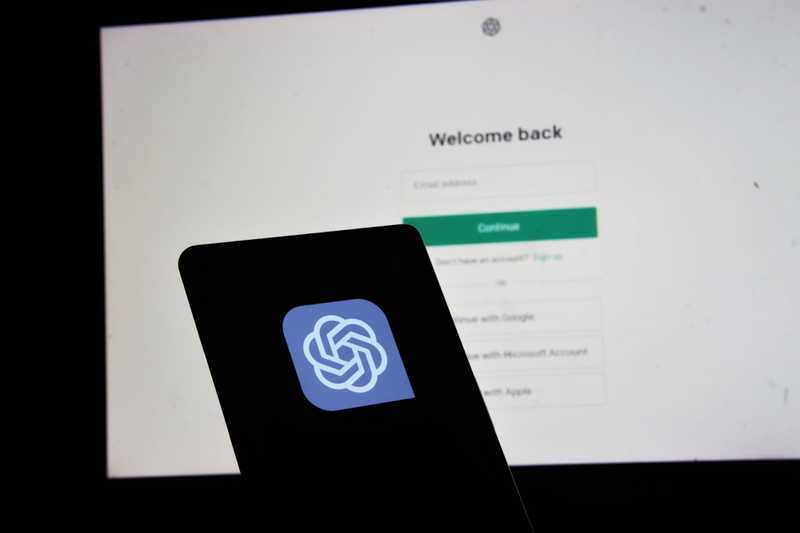User experience has always been an essential part of any business niche. The biggest success has always been seen in companies that have tailored their products or services to the customer’s needs. Since discovering the audience’s preferences is a sure way to improve one’s business and results, many UX designers have been seeking innovative ways of implementing AI in user experience. That’s why this article will focus on the importance of mixing AI smarts with street smarts for killer UX insights.
By understanding how AI tools can help you further develop your product or service, you’ll also learn how to combine their power with your intuition to achieve the best results. Furthermore, we’ll elaborate on the aspects that influence the future of UX design and how they can be used to your advantage. By tackling some of the most common UX challenges, you’ll get insights into the best practices for balancing AI and human intuition.
Continue reading to discover the benefits of combining AI in user experience and street smarts in design!
The Use of AI in UX
AI, also known as artificial intelligence, is used to define the intelligence of machines and software. In today’s age, this technology is widely used throughout many fields, including business, science, and government. Even though it was founded as an academic discipline in 1956, AI has also made its way into our daily lives through popular applications like YouTube, Google Search, Netflix, and Siri.
So, how can it be used to shape the future of UX design? First, you must understand that artificial intelligence utilizes a variety of technologies and techniques. The ones used are mostly based on the task that the AI is supposed to help with. Thus, some of the most commonly used techniques for UX include the following:
- Natural language processing: NLP allows software to interpret, understand, and generate human language.
- Machine learning: ML uses training algorithms to efficiently understand patterns and make data-based decisions.
- Deep learning: the use of multilayered models to learn from, process, and transform large volumes of data.
- Expert systems: used to replicate decision-making abilities from real-life experts when it comes to specific fields. These AI systems act as a knowledge base of facts and rules from which they draw and provide recommendations.
Photo by Mojahid Mottakin on Unsplash
Ways AI Aids in UX
Even though AI and UX are separate disciplines, the latter can use the power and advantages of artificial intelligence to improve their workflow. While AI is ever-evolving and experiences constant improvements, it’s proven effective in aiding UX in several fields. The ones with the best results are the following:
- Automation
- User research
- A/B testing
- Insights
- Personalization
Automation
The main benefit of using AI in UX is to automate repetitive and time-consuming tasks. This allows people to focus on more important matters, such as the strategic and creative aspects of their work while AI tools handle the large volumes of data. Since it can be used to automate various tasks, such as analyzing data, taking notes, generating images, and brainstorming ideas, it makes the whole UX process more efficient.
User research
Since AI can automate different tasks within this field, the same applies to user research and testing. It’s important to mention that there are different tools used for this task, based on the desired outcome. For example, you can use text analysis and chatbots to collect feedback or implement eye tracking and heatmaps to detect areas of interest. Moreover, you can easily identify strengths and weaknesses by analyzing the session duration, scrolling trends, and click patterns.
A/B testingA/B testing in UX is used to compare the effects and results between two versions of the product or service. This can either be a webpage, design element, or interface to ensure it’s up to the audience’s standards. For this reason, many AI tools allow you to track patterns in user engagement and behavior, as well as conversion rates.
Insights
One of the main reasons the UX discipline uses AI tools is for gathering and analyzing practical UX insights. Proven as one of the most difficult UX challenges, discovering the user behavior and experience involves a large volume of data that has to be carefully reviewed and segmented.
Due to the time and effort needed to complete this process, many businesses turn to the use of AI tools. They can efficiently review the gathered data and extract key information from it, which leads to reducing the workload on the UX researchers. Some AI platforms, such as User Evaluation, go as far as to offer transcription, collections, AI tags, and AI reports and presentations to help you get ready for your next meeting.
Personalization
Lastly, AI software can be used to efficiently personalize user experiences by drawing information from various sources. Since these tools draw conclusions based on the user’s history and are capable of detecting patterns, they can also craft and adapt offers to the consumer’s preference. Tailoring the product or service to the customer’s needs will ensure higher satisfaction and a better user experience.
The Limitations of AI
While artificial intelligence may be useful for numerous occasions, there are still limitations you should be aware of. Even though many people worry that they’ll be replaced by this advanced technology, it still fails to meet real-life human capabilities in these fields:
- Ethics
- Human creativity and intuition
- Complex issues and decisions
- Communication and collaboration
Ethics
The main reason why AI can’t take full control of the UX process is due to an ethical standpoint. It’s important to have real employees go over the AI’s work to ensure a fair and transparent use of information. Furthermore, this technology can get easily overwhelmed by ethical implications, such as privacy concerns, biases, environmental sustainability, and other factors.
Human creativity and intuition
The second obvious limitation of AI capabilities is its lack of human creativity and intuition. While these tools can extract key information from various sources and large volumes of data, they can’t fully understand the emotion behind them. Furthermore, even though they excel in data analysis and pattern recognition, they lack the essential creativity and empathy to come up with the best solution for the specific target audience.
Complex issues and decisions
Those working in the UX field are often tasked with dealing with complex issues and decisions. Even though many AI tools are capable of brainstorming ideas and can offer various solutions, more complex matters are best dealt with by human experts. While both can synthesize information from different sources, the human expertise is showcased by coming up with innovative solutions and addressing multiple perspectives.
Communication and collaboration
A crucial part of the UX process is sharing the research findings with the team or clients. Thus, these AI tools can’t replace interhuman communication and collaboration. While artificial intelligence may be capable of generating reports and presentations based on the gathered data, a human touch is still needed to explain them to those involved in the UX process.
The Importance of Street Smarts in UX
The phrase street smarts is often used to indicate the ability of a person to adapt and prosper in the urban environment. Honed by real-life experience, it highlights the skills used to navigate difficulties and social settings, while also finding the best solutions for certain circumstances. Utilizing street smarts in the UX environment can lead to more efficient strategies and optimizations for enhancing user satisfaction.
If your business is dependent on user experience, it’s best to have personnel experienced in interhuman connections and communication. By combining empathy with basic human psychology, one can tailor their product or service based on the customer’s needs and achieve more efficient results.
It’s always beneficial to have team members who can put themselves in the user’s shoes and find the most appropriate solution for their case. While many businesses and organizations tend to underestimate this importance and focus solely on conversion rates, they’re missing out on numerous opportunities. Being able to relate to the real-life struggles and difficulties people face will enable you to create better products and more effective marketing strategies.
Photo by Austin Distel on Unsplash
Balancing AI and Human Intuition
So, how can one combine street smarts and AI to achieve the best possible results in human-centric UX? First, you should remember that you won’t achieve a desirable outcome if you tend to use AI tools without human input. Even though this advanced technology is ever-evolving, it still needs your guidance to achieve optimal results.
While the AI software can take the workload off your shoulders, you should still be present and revise the process. Even though it can aid in data gathering and analysis, you’ll need to add your own input when making insights-based decisions and crafting user-centric solutions.
Furthermore, your part in the UX research is dependent on the tools you use. While some AI platforms only need your instructions to successfully accomplish the given tasks, others may need you to be more involved in the process.
Depending on the platform you use, they may offer an intelligent AI chat that can act as a work assistant. For example, User Evaluation offers a ChatGPT-like experience that can help brainstorm ideas alongside you and explain confusing data. In both cases, it’s of utmost importance to state your needs clearly and with as much detail as possible.
Conclusion
After discovering the benefits of mixing AI smarts with street smarts for killer UX insights, it’s up to each individual business to choose the tools most relevant to their cause. Even though it may be tempting to base your work solely on this technology, one must never forget the human-centric nature of this practice.
Thus, the AI can work on processing large volumes of data and aid in brainstorming ideas, while you’ll have the time to revise the gathered insights and come up with suitable solutions. Mixing your own experience with these tools will ensure the best possible outcome both for you and your users.


